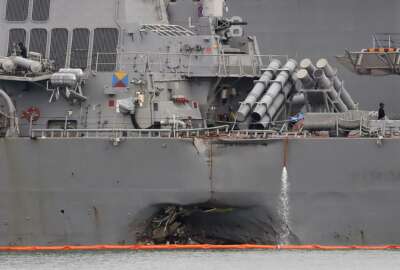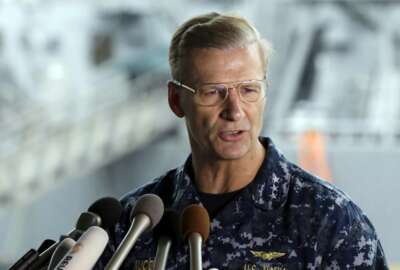
Navy putting focus on self-correction to better service after years of let downs
After years of cost overruns and vessel accidents, the Navy is rethinking leadership.
The Navy has had some rough patches in recent years in dealing with vessel collisions, slow acquisition timelines and scandals in its ranks, but the service’s top officer is now challenging its service members to get into ship shape.
Chief Naval Officer Adm. Michael Gilday is prioritizing self-awareness and self-correction as a means to better the service. He released a new charge of command Tuesday, the first since 2018, to guide commanders and sailors in creating a resilient, competent force based on integrity.
“The foundational principle of continuous self-assessment applies to every sailor, every civilian team and organization in our Navy,” Gilday said at the Surface Naval Association Conference. “Regardless of whether you are employing our force generating readiness or developing a future force. The ability to accurately self-assess is a trait that we consistently see in our highest performing units, both at sea and ashore. It is well understood that if you do not identify our mistakes and recognize opportunities to do better, we merely plateau and we don’t move beyond mere status quo performance.”
Gilday said those self-assessment tools must be used across the Navy to better the service.
One of the ways the Navy will help in doing that is to continue to invest in leaders by incorporating those self-aware qualities into curriculum. Gilday said the Navy will start with flag officers and Senior Executive Service members and expand from there.
The Navy is also going to reform its talent management system to incentivize and reward leaders who “Get real. Get Better” — the command charge slogan for not being content with the status quo and using the self-assessing and correcting behavior.
“We will promote leaders not just for the outcomes that they achieve, but also for the culture that they create in achieving these outcomes,” Gilday said.
Finally, the Navy will update its own organizations to facilitate the behavior it wants. It started the Navy Safety Center, which will be revamped into Navy Safety Command. The leader will report directly to the Navy CNO and evaluate how the entire Navy manages safety and risk. It will grade commands on their ability to self-evaluate.
Additionally, there will be an action board, chaired by the vice CNO and the Navy undersecretary, responsible for driving institutional learning in the service.
“They will receive recommendations evaluate their merit, implement the best ones and measure their impact through feedback surveys, surveys, and data,” Gilday said. “We are knocking down stovepipes. And we are building connective tissue across the Navy to focus our work, optimizing our resources and maximizing our impact to our sailors who are advancing our culture to unleash the power of your critical thinking in ways that we have never done before.”
Gilday likened it to the comprehensive review the Navy went through after the ship collisions in 2017.
The CNO pointed out two main factors preventing the Navy from reaching its full potential. The first is the gap between the top and lowest performers. The second is an outdated approach to problem solving and learning.
“Recent events show us show us that we as an institution have not routinely absorbed lessons in a way that truly endures,” Gilday said. “When something bad happens. We often view poor performance as a one off failure for short-term adjustments in place and apply burdensome regulations, guidance and oversight.”
His hope is that the new strategy will help with those issues.
Copyright © 2024 Federal News Network. All rights reserved. This website is not intended for users located within the European Economic Area.
Scott Maucione is a defense reporter for Federal News Network and reports on human capital, workforce and the Defense Department at-large.
Follow @smaucioneWFED





